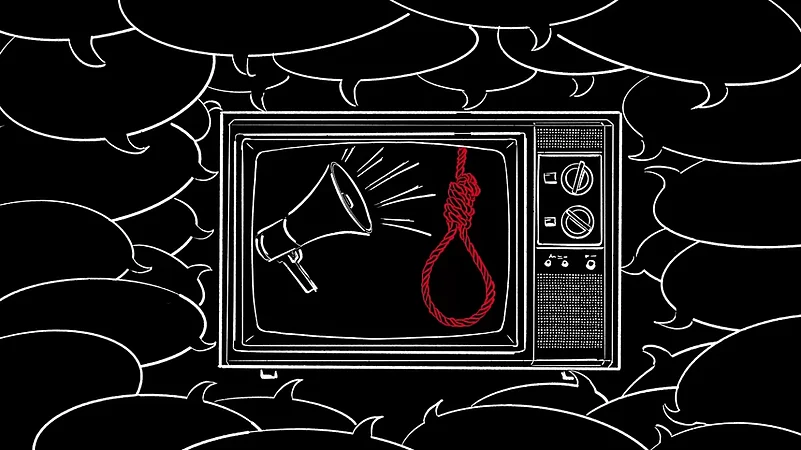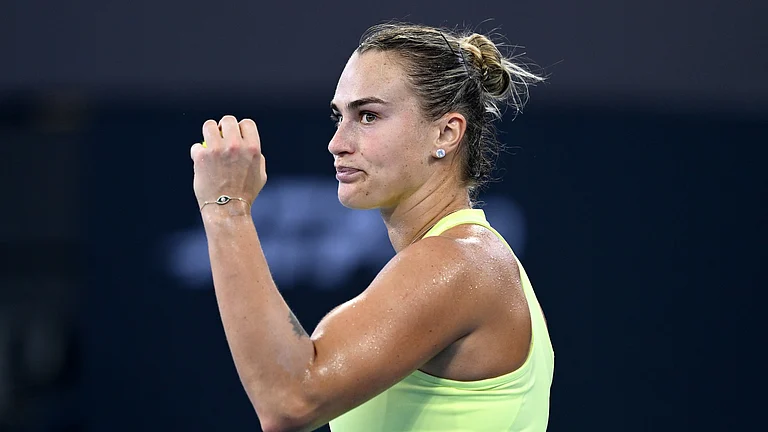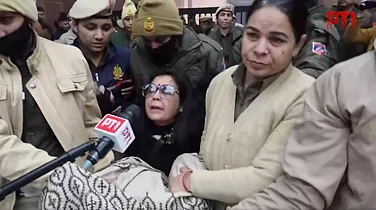“Sushant’s body was found hanging from a fan”
“Andhra teen attempts suicide after mother refuses to bring snacks”
“Teenager dies by suicide over opposition to relationship”
“Delhi man commits suicide after argument with wife”
Such headlines, often amplified by the explicit description of suicide as an act—sometimes turning into a visual cacophony with the anchors screaming ‘drug do, mujhe drug do’—broadly represent the unfortunate state of suicide coverage by the Indian media.
Despite several guidelines issued by the World Health Organization (WHO), the Press Council of India (PCI) and other bodies, nothing much has changed over the years. The National Crime Records Bureau (NCRB) data shows that in 2021, the number of deaths by suicide reached an all-time high, with a 7.2 per cent increase from 2020. In such a scenario, when media should play a responsible role and help in preventing suicides, the drama created around suicides by various media platforms ends up doing the opposite.
Several studies show that media’s portrayal of suicides affects those who are extremely vulnerable. A study published in 2020 points out that the risk of suicide increases by 13 per cent due to the media coverage of a celebrity’s suicide. However, the vivid description of the act enhances the chance of suicide by 30 per cent.
Talking about the impact of media coverage of celebrity suicides, Lakshmi Vijayakumar, the founder of Chennai-based NGO SNEHA, which works to prevent suicides, says: “When you have a celebrity suicide and it is sensationally reported, there is an 18 per cent increase in the number of suicides. For example, the Netflix series 13 Reasons Why shows a young girl giving 13 reasons why she wants to end her life and in the last episode, she dies by suicide. After it was aired, the number of suicides in the US among young girls aged between 16 and 21 increased by almost 23 per cent.”
A Google search study by SNEHA, after the death of actor Sushant Singh Rajput, shows that for almost two weeks there had been a 28 per cent increase in people searching for ‘how to die by suicide’? The death of American film star Robin Williams also pushed suicides of Parkinson-affected middle-aged men by 17 per cent.
WHO, in its recommendations published in 2017 titled ‘Preventing Suicide: A Resource for Media Professionals’, notes how a celebrity suicide actually affects suicidal behaviour in people. “Glorifying a celebrity’s death may inadvertently suggest that society honours suicidal behaviour and thus may promote suicidal behaviour in others. For this reason, special care should be taken when reporting celebrity suicides. Such reports should not glamorise the suicide or describe the suicide method in detail,” says the report.
Even after such guidelines, SIREN, a project of Centre for Mental Health, Law and Policy, finds that among the English newspapers, more than 80 per cent use headlines that grab attention and around 85 per cent mention the method. Only 17 per cent provide the help-seeking information and only 0.72 per cent focus on stigma-reduction or talk about how suicides are preventable.
Tanmoy Goswami, a jury member of the SIREN award project and creator of Sanity, an independent mental health storytelling platform, says: “Far too many stories still sensationalise suicides, give out personal details of the deceased as well as the method of suicide, and impart a lurid ‘crime’ flavour by their use of language and imagery. It isn’t hard to imagine the stigma and hurt this creates for survivors, at the very least.”
The PCI, in its 2019 guidelines, clearly asks media not to “place stories about suicide prominently and unduly repeat such stories” and not to “explicitly describe the method used or provide details about the site/location”. However, most media houses don’t follow these guidelines. While analysing recent stories in leading English dailies, serious anomalies were noticed.
In a report published on September 2, 2023, on the suicide of veteran Shiv Sena leader Sudhir More, one of the most-read newspapers of the country, wrote: “More took an auto rickshaw to Ghatkopar station. The CCTVs at the station captured him entering from the West side and taking an FOB to platform 2. He walked to the end of the platform and got down on the tracks. Cameras on the platform have captured a CSMT-bound slow train approaching at 11.02 pm and slamming the brakes about 100 to 200 meters from the platform.”
Such vivid description of a suicide is precisely what the WHO and PCI want media organisations to refrain from. Practitioners and scholars believe that it may encourage ‘copycat suicides’—otherwise known as the Werther effect. The term was coined around the early 18th century with the publication of Johann Wolfgang von Goethe’s The Sorrow of Young Werther. In this story, Werther finds himself in a love triangle and decides to take his life to get rid of it. Following the success of his book, several consecutive suicides happened—a sort of ‘copycat suicides’—wherein a few who died by suicide even followed the same manner described in the book.
Another story in a national English newspaper titled ‘Teenager dies by suicide over opposition to relationship’ revealed the suicide note in blatant contravention to the prevalent guidelines. “Whoever you love, be ready to die with them,” said the note. Both these reports were published without a trigger warning or the helpline numbers.
Vikas Arya, a research fellow at the Centre for Mental Health of the University of Melbourne, says: “In the modern era, research on different forms of media, including newspapers, television, film, and literature, have suggested that media coverage of suicide, especially newspaper reporting, may lead to ‘copycat suicides’. While some researchers argue that ‘copycat suicides’ based on media reporting are mostly limited to celebrity suicides, most researchers agree that media coverage of suicide can potentially lead to it.”
Referring to the absence of helpline numbers in most of the stories, Peter Mayer, a University of Adelaide scholar, notes: “In almost all cases, best practice guidelines are not observed, details of methods are given and rarely are contact details of suicide prevention NGOs provided.”
In contrast to the Werther effect or ‘copycat suicide’, there is evidence to highlight media’s role in preventing suicide, known as Papageno effect. Named after a character of Mozart’s opera, The Magic Flute, where the protagonist wants to die after losing his love but was saved by three boys who offered him an alternative to dying, this refers to the potential of stories to help people in finding out ways to prevent suicide.
Vijaykumar, who is currently the Head of the Department of Psychiatry in VHS, Chennai, shares how SNEHA actively used media in Tamil Nadu to prevent suicides. “Most of the calls we received from the students feeling suicidal during the announcement of results either failed in one or two subjects or got less marks than expected. We took the help of the media and under pressure, the Tamil Nadu government, in 2004, for the first time, introduced supplementary exams for class 10 and 12 students,” she says. It actually helped in bringing down the number of suicides. In 2004, while the number of cases across Tamil Nadu stood at 450, in 2021, despite an increase of 30 per cent in the total number of students, the cases came down to 200.
Another major change, she suggests, pertains to the approach towards suicide. “Suicides are mostly covered by crime reporters and they look at it as a crime and describe the process and methods. Rather, suicides need to be reported by health reporters who will look at the story through a health perspective,” she says.
Arya, nevertheless, thinks that it is a matter of training and any reporter can report on suicides if they learn sensible ways to report it. While it is much easier to restrain the newspapers, for digital media and television, the race for views and TRPs pushes them towards sensationalism.
Sohini Ghosh, communication theorist and a professor at Jamia Millia Islamia, says: “In the age of digital media, it’s not just the designated media but people who have to be ethical about what (not to) circulate. Given that the media and its consumers are no longer discreet, there has to be a larger consensus on ethical behaviour.” Vijaykumar points out how people are putting up any content on YouTube manifesting trickling effects across society.
The media frenzy over the death of Sushant Singh Rajput in the recent past even pushed the Supreme Court to intervene. In an observation, Chief Justice of India, D Y Chandrachud said: “Because of the kind of frenzy after the death of that actor, everybody went berserk, presuming it is a murder… You pre-empt criminal investigation.” Besides the insensitive coverage, media trials turn the ethical practices upside down.
“There should also be no attempt to call any suicide a dastardly act. It adds to the humiliation of an already distraught person. We should also not charge someone else as having been “triggered”. Media trials of people who are accused of catalysing someone’s death is a form of social lynching that is highly condemnable,” says Ghosh.
(This appeared in the print as 'No Trigger Warning')



























